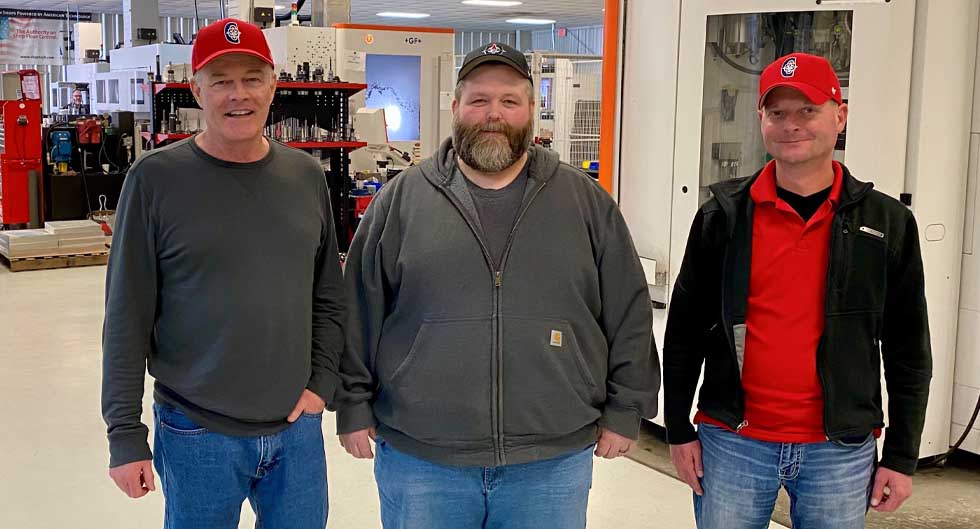Better and Faster With 5-Axis CNC Milling
Compass Precision has dozens and dozens of advanced CNC machining centers. But perhaps the most impressive are its complement of twenty-one 5-axis milling machines located at Advanced Machining (Salisbury, NC), Gray Manufacturing (Denver, NC), and R&D Machine (Oldsmar, FL). These units are more expensive than your average CNC machine and more complicated to program and operate. Yet, Compass loves them and plans to buy more. To get a better handle on this, we queried CEO Gary Holcomb (pictured on left in photo above). This is what he told us.
Why Does Compass Have So Many 5-Axis Mills?
At the risk of seeming ancient, let me tell you a story. My first involvement with CNC machining started in the late 1980’s at a shop in Pittsburgh that made parts for artificial hip and knee joints. These components had very complicated, curvy surfaces, just like real bones do. We manufactured arguably the most complex of these parts, the hip stem, using 3 and 4-axis machines. But making them involved numerous set-ups, and operations, for each part. This meant it was difficult to produce these units quickly. And every time we did a set-up, we introduced the potential for misalignment leading to bad parts. It was awful explaining to our customers why their deliveries were going to be late, or their parts bad.
So What Did You Do?
Nothing. Honestly, we did not pursue 5-axis machining for these hip stems at the time. I left this company in 1993 and saw the benefits of 5-axis CNC milling with a later employer. Talk about an eye-opening experience! Now with Compass, we fully embrace 5-axis machining and prefer this type of CNC milling over every other vertical machining technology.
What Exactly Is 5-Axis Machining?
Five-axis machining involves moving the part or cutting tool along five different axes simultaneously. Most commonly, the tool moves linearly back and forth (x-axis), in and out (y-axis), and up and down (z-axis) while the part or tool rotates along the two of these three axes. The ability for the cutting tool to rotate with respect to the part is why 5-axis machining is so advantageous. Four-axis machining only allows for rotation along one axis while 3-axis machining, still by far the most common type of milling, has no rotation at all.
Why Is Rotation So Important?
Without rotation, you can only machine flat surfaces oriented horizontally or vertically. The only way to do anything else is to add additional operations that involve fixturing to change the position of the part relative to the cutting tool. More operations add downtime for set-ups and introduce the possibility of error due to misalignment. The expression “one and done” was coined to capture the inherent advantage of making a part complete with a single set-up on a 5-axis machine.
“One And Done” – I like That. Was That Your Idea?
No. Someone smarter than me came up with that. But at the core of this notion is that reducing the number of required set-ups absolutely improves quality. This is because every time an operator does a set-up, the possibility for variation is introduced, even with the very best machinist. Equally important is the effect that reducing set-ups has on cycle time and lead-time. Back in the day, my old Pittsburgh shop’s delivery times could have been cut in half (from 16 weeks to 8 weeks) merely by adopting 5-axis machining.
So Are 5-Axis Mills Preferred Because They Make Very Complicated Parts Accurately or Less Complicated Parts Faster?
Yes to both, which is why Compass likes 5-axis machines so much. There is simply no better way to manufacture components with lots of curvy surfaces, like the orthopedic components my old shop made. But at the same time, 5-axis mills are great for making simpler parts having any geometry other than flat vertical and horizontal surfaces. This is because of the ability to reduce the number of required set-ups. This lowers cost and improves quality.
Are There Other Advantages to 5-Axis Milling?
There are many. Because rotation often permits tools to get closer to cutting surfaces, this technology can use shorter cutting tools, which allows for higher spindle speed, and shorter cycle times, without introducing undesirable vibration. In addition, rotation also inherently improves tool life and cycle time, although explaining why is well beyond the scope of this interview. Finally, 5-axis machining can create intricate shapes and contours that simply aren’t available through other CNC processes.
How Many 5-Axis CNC Machines Does Compass Have?
We have twenty-one 5-axis mills. That’s an impressive number for a firm our size. Nine of these machines are located at R&D Machine, our shop in Oldsmar, FL run by Justin Kovscek (pictured on right above). R&D uses these machines to make complicated A&D parts. We have nine more 5-axis mills at Gray Manufacturing in Denver, NC. Gray specializes in complex space components and is run by Evan Grose (center above). Finally, there are three 5-axis mills at Advanced Machining in Salisbury, NC run by Keith Felts where we make difficult parts for a variety of markets.
Finally, What Are Compass’s Future Plans for 5-Axis Machining?
Our credo is “we make the tough stuff.” As such, we rely heavily on 5-axis milling to manufacture components that are impossible to make cost effectively, or at all, on other types of mills. And to bolster our position, we continually invest in new 5-axis machines plus train more of our people to program and operate this advanced equipment. There are approximately 16,000-18,000 CNC shops in the United States, but probably less than 100 of them focus on 5-axis machining like we do. That’s good for us and for our customers.
For more information about Compass and its manufacturing strategy focusing on 5-axis machining, please contact CEO Gary Holcomb directly at [email protected].

